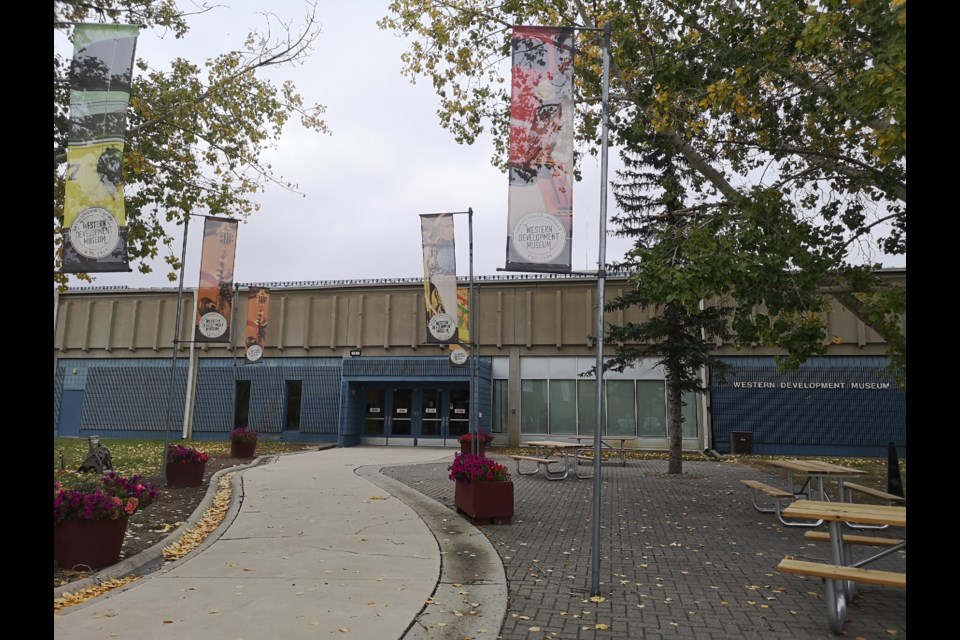The Western Development Museum’s (WDM) virtual coffee club gives the opportunity to connect with guest speakers from around the country, thanks to using the Zoom app.
The museum’s Sept. 28 presentation advanced the spirit of truth and reconciliation and was led by guest speaker Annie Battiste.
Battiste is an educator by trade and currently lives on the East Coast, but thanks to the virtual format of the presentation, distance was not a concern.
She is also a woman of Mi’kmaw ancestry, and with 10 years of experience teaching about land acknowledgement and reconciliation, she was an ideal speaker to address the topic.
The topic was land acknowledgement, which is a central concept in the discussion about truth and reconciliation. According to Battiste, land acknowledgement is a good place for us to start repairing our relationship to the land, ourselves, and Indigenous communities.
"Thinking about land acknowledgement is thinking about where your feet are planted,” Battiste said. “(I)t’s about what is under your feet — what are your feet touching?”
Before land acknowledgement can be meaningful, the concept of treaty formation must be understood.
“Treaties are an agreement between two sovereign nations,” she explained. "This is not an Indigenous-specific thing; there are many treaties among European nations, and where sovereign nations have agreed to live on the land together.”
Canada has over 300 signed treaties, and this number continues to grow as modern treaties formed after 1973 continue to be introduced. Battiste said the most important consideration is to view a treaty as an ongoing agreement, not a document with only historical interest.
Treaties in Canada were introduced as European pioneers expanded their sphere of influence. "The intent of the treaty on the First Nations side was to maintain peace and good order,” Battiste explained.
"If you're using the treaty and number that you are actually in... and recognizing the experience of other people on that territory who have other experiences outside of the treaty, then you are doing a good job,” Battiste said. "But there are other nuances beyond that.”
For confirmation, you can ask an elder or visit Native-Land.ca, which maps out treaty agreements across North America.
Battiste said treaty language was assigned to Indigenous tribes by pioneers, and a more appropriate way to honour Indigenous groups is to use their language and names in your acknowledgement.
Many organizations express land acknowledgement through a blurb on a website or document, but the key is to avoid tokenism, Battiste said. Her advice is to be honest with your organization’s level of involvement, and when it comes to wording, she recommends a mindful review.
The key, she said, is to explore and state how you intend to act on your intention.
Land acknowledgement is not meant to be a difficult process.
"There is no right way to do a land acknowledgement, but it (has to) acknowledge personal identities...,” she said. “This doesn’t mean you have to get into your fifth-generation ancestry in a meeting; it’s about how you see yourself on this land, think about and reflect on how you benefit from this treaty, and what you can do about it.
“I'm here on this land. How do I connect with this land? What is my responsibility?”
“Hi, my name is Annie. I’m a third-generation settler. I’ve had the benefit of multi-generational farming on this land. This meeting is taking place on… territory, home of the… people,” Battiste offered as an example.
You don't have to say the same thing every time, she said. It’s about understanding the core concepts and adapting to the location and situation.
“Use words that you would use (day-to-day),” she said. “I have a friend who says, ‘where many feet have walked before.’ Create your own space in it.”
Acknowledgement is separate from ritual and ceremony, so there’s no need to consult with an elder.
She said there’s more value added when individuals do this for themselves, and when they are committed to recognizing the story of the land. Seeking an elder to make the acknowledgment can come across as another form of tokenism and affects the statement’s authenticity.
Consider using past, present, and future tenses, and recognize that many past experiences are still being experienced today. It’s inaccurate to thank the “generous Indigenous people for letting us live on this land,” because this wasn’t a choice thanks to the Indian Act.
"Sometimes we gloss over the facts a little too hard, which has the possibility to offend,” Battiste advised.
Annie Battiste is named after her maternal grandmother, and she is a proud Mi’kmaw woman and a member of the Potlotek First Nation in Unama’ki (Cape Breton, N.S.). She is also a certified teacher and has earned her bachelor’s degree and master’s degree (Educational Foundations) from the University of Saskatchewan. She is committed to social justice and improving treaty relationships among Canadians.
The next virtual coffee club presentation will cover Indigenous projectile points (arrowheads) and is scheduled for Oct. 26.
To access the Zoom meeting, visit wdm.ca/CoffeeClub and be sure to register 24 hours in advance.
For more information, WDM program coordinator Alexis Jones can be reached at 306-693-5989 or by email at [email protected].
In response to some providers blocking access to Canadian news on their platforms, our website, MooseJawToday.com will continue to be your source for hyper-local Moose Jaw news. Bookmark MooseJawToday.com and sign up for our free online newsletter to read the latest local developments.




